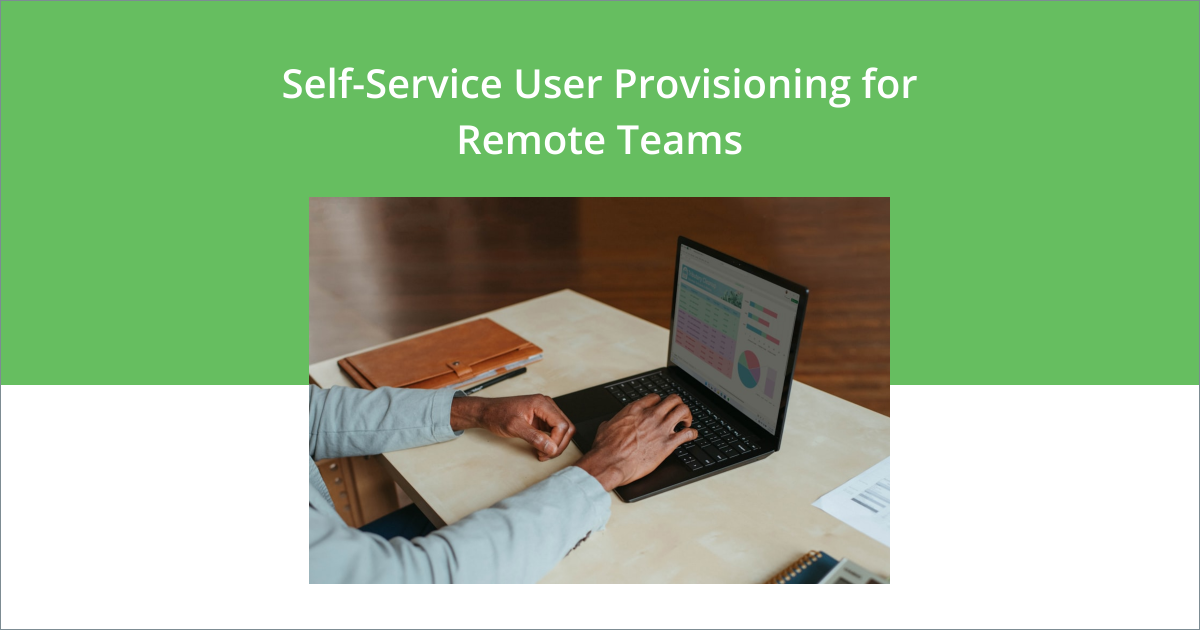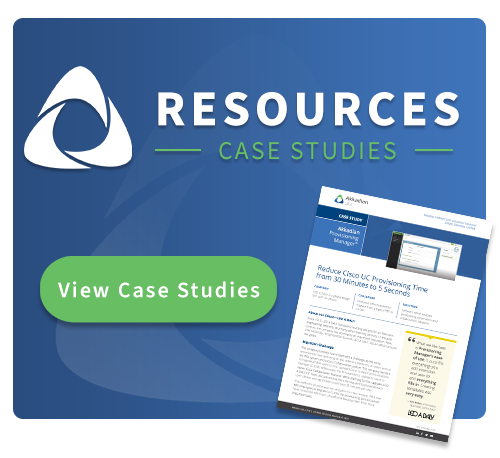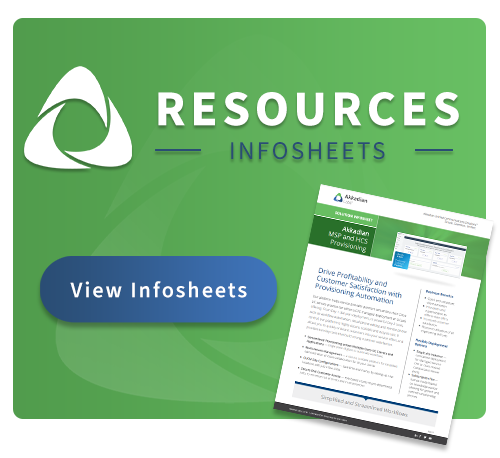Remote workforces face the threat of access fragmentation and limited authorization. Fortunately, self-service user provisioning is the versatile, responsive solution for these dispersed work settings. By implementing an effective provisioning system, organizations can ensure UC resources span multiple departments and time zones, keeping your remote teams secure and efficient.
Global enterprises thrive on remote work to stay competitive. Self-service provisioning empowers remote teams to manage their access needs independently, ensuring they operate at peak productivity from anywhere in the world. Embracing this capability boosts efficiency and helps maintain an edge in the global market.
This guide will outline the advantages of self-service user provisioning and the significance of an automated user provisioning platform in achieving it.
What Is Self-Service User Provisioning?
Self-service user provisioning is a process in which users are empowered to create, modify, or delete their accounts and access to various systems, applications, and resources. Instead of relying on IT or administrative staff to handle these tasks manually, self-service user provisioning allows individuals to make those changes independently, in the applications themselves or in a user-friendly interface.
This system improves efficiency, enhances user satisfaction, and strengthens security by ensuring access rights are managed consistently and transparently.
Why Self-Service Provisioning is Important for Global Enterprises
Self-service user provisioning is especially important in hybrid and remote work environments. It allows for rapid and efficient access management, regardless of location, and provides several advantages.
Efficiency and Agility
Self-service provisioning reduces staff’s dependence on IT support. This shift allows administrative staff to focus on strategic initiatives. It also allows new hires to get tools and permissions promptly, speeding up onboarding and ensuring immediate productivity.
Scalability
Traditional authorization methods limit workplace availability due to high request volumes. Self-service provisioning improves this scalability, serving high request volumes across multiple time zones with instant access.
Self-service provisioning seamlessly scales with an enterprise’s growth due to its low resource allocation. Instead of relying on specific staff to fulfill requests, users can set up, configure, and optimize their UC infrastructure as they see fit.
Enhanced User Experience
Granting employees seamless access to essential tools and resources enhances user experience. Self-service provisioning reduces downtime and offers a user-friendly interface for employees to manage their access swiftly. In turn, this enhances productivity and encourages a responsive, organized culture.
The Role of Self-Service Portals
For organizations with a large remote workforce, self-service user provisioning is only as effective as its self-service portal.
A self-service portal is a specific website or application that allows users to find information, solve problems, and get help without assistance. These portals can include various features, such as a knowledge base, FAQ section, community forum, or chatbots.
These resources are crucial to the success of self-service user provisioning, as they foster independence in global enterprises. Some components of an effective self-service portal include:
- Centralized Access—By centralizing access, organizations can streamline user identity and access management tasks, providing a secure and efficient way to view sensitive information within the portal.
- User-Friendly Interface—A user-friendly interface empowers users to find answers quickly, minimizing wait time for those who need specialized assistance.
- Automated Workflows—Automated workflows streamline processes, improve efficiency, and enhance unified communication management. Ultimately, this leads to better service and reduced support overhead.
It is crucial to implement a restriction method to enhance user experience and effectively manage permissions. While there are different authorization systems, with many based on conditional permissions, large-scale corporations often adopt Role-Based Access Control for comprehensive access management.
The Importance of Role-Based Access Control
Role-based access control (RBAC) is an authorization model that restricts access to resources based on a user’s role within an organization rather than their individual identity. In a healthcare organization, for instance, RBAC may allow doctors to write and read orders, while nurses may just read orders.
Security and Compliance
RBAC minimizes unauthorized access and data breaches, protecting critical assets and confidential information. Through consistent access controls and audits, it ensures regulatory compliance. This authorization model strengthens security, governance, and risk management, enhancing operational integrity and trustworthiness organization-wide.
Minimized Risk
In addition to improved security and compliance, RBAC minimizes human error risk by tailoring role-based permissions to an employee’s job functions.
RBAC streamlines access management with a structured framework that aligns with organizational needs, enforcing strict controls and audit trails. It enhances cybersecurity, promotes accountability, and ensures compliance with regulations, safeguarding the enterprise against threats and bolstering information infrastructure resilience.
The Risks of Manual Provisioning
Although provisioning can simplify I.T. operations, manual provisioning can lead to several security risks, each potentially leading to service disruptions or outages in critical applications.
- Improper Access—When working on manual provisioning, an organization may be forced to give administrators additional access to critical functions. This reliance can lead to several consequences, ranging from accidental service disruptions to malicious misuse.
- Human Error—Manual user provisioning is repetitive, which introduces an increased risk of human error.
- Malicious Activity—Any vulnerability in security processes poses a risk for malicious actors. Intentional misuse by employees is a distinct possibility, especially when the authorization levels are manually applied.
To mitigate these security risks, it is recommended to upgrade to an automated provisioning solution. This method enhances security by incorporating templated jobs, role-based access, end-user self-service portals, and audit trails.
Improve Your Self-Service Provisioning through Automation
Self-service provisioning is essential in modern enterprises due to its numerous advantages. By allowing users to access resources independently, it significantly boosts operational efficiency and enhances user experience.
Integrating self-service portals with Role-Based Access Control (RBAC) is key to strong security measures and compliance with strict regulatory standards. However, without automation, self-service provisioning can become a burdensome overhaul.
Automated provisioning platforms simplify workflows, speed up approvals, and offer real-time visibility into access changes. By focusing on seamless and secure operations, organizations can confidently and efficiently manage the complexities of modern authorization.
Akkadian Provisioning Manager makes it easy for provision users to access an entire suite of resources instantly. Minimize your organization’s repetitive, manual work and focus on effective I.T. solutions.



